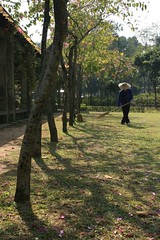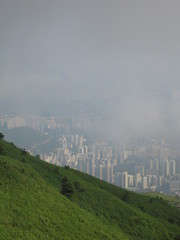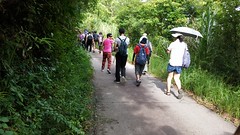Tai Po District
Tai Po District is one of the 18 districts of Hong Kong. The suburban district covers the areas of Tai Po New Town (including areas such as Tai Po Market, , Tai Po Industrial Estate, Tai Wo Estate), Tai Po Tau, Tai Po Kau, Hong Lok Yuen, Ting Kok, Plover Cove, Lam Tsuen Valley, Tai Mei Tuk and other surrounding areas, and its exclaves Sai Kung North, in the northern part of the Sai Kung Peninsula and including islands such as Grass Island (Tap Mun), and Ping Chau (Tung Ping Chau). Tai Po proper and Sai Kung North are divided by the Tolo Channel and the Tolo Harbour (Tai Po Hoi). The district is located in the Eastern New Territories. The de facto administrative centre of the district is Tai Po New Town.
Like Yuen Long, the area of Tai Po used to be a traditional market town. Tai Po New Town, a satellite town, developed around the area of Tai Po and on reclaimed land on the estuaries of Lam Tsuen and Tai Po rivers. It had a population of 310,879 in 2001. The district has the third lowest population density in Hong Kong.
History
The district is named after Tai Po. Tai Po's population dates back to the eleventh century, people would make sufficient money by clamming, pearl harvesting and fishing. In Yuen Chau Tsai, stone axe and pottery have been discovered which were believed to be made in Neolithic era.
Tai Po was the seat of the district officers that oversaw the whole of the New Territories with Island House as their official residence. The Island House was completed in 1906, 8 years after the Convention for the Extension of Hong Kong Territory. The New Territories was later split into the District North and South (Not to be confused with modern-day Northern District and Southern District of Hong Kong), as well as New Kowloon in 1937. Tai Po remained as the headquarters of the District North after the split. The old headquarters of the District is a declared monument currently. The District North and then further shrunk, which Sha Tin District, Yuen Long District (includes modern day Tuen Mun) and the modern day Northern District were split from the District North and District North was renamed Tai Po District, which oversaw Tai Po and nearby Lam Tsuen Valley, as well as an exclave on the northern part of the Sai Kung Peninsula. The seats of the Tai Po District branch of the Home Affairs Department as well as the Tai Po District Officer, is currently located in another government building, Tai Po Government Offices Building, in Ting Kok Road, in the northern shore of Lam Tsuen River.
The Tai Po District Council was formed as the Tai Po District Board in the 1980s, with elections held since that decade.
Geography
Lam Tsuen River Tai Po is located in the north of Hong Kong, northeast of Sha Tin. Even though the Tai Po Industrial Estate is located in the district, it is still one of the most unpolluted districts in Hong Kong. Tai Po's population density is considerably lower than Kowloon's, having many old, small villages in the mountains.
Tai Po is surrounded by fertile valleys which explains why it has held such population for over a millennium. Tai Po is covered with bicycle tracks, east of Lam Tsuen Valley and west of Tolo Harbour. East Rail line is the main connection of Tai Po to the rest of Hong Kong.
Tai Po has 460 hectares of purely woodland area, the largest in Hong Kong.
Islands
In addition to the mainland part of the district, the following islands of Hong Kong are under the jurisdiction of Tai Po District:
- A Chau (丫洲, Centre Island)
- Breaker Reef – Tai Po
- Bun Sha Pai
- Cham Pai
- Chau Tsai Kok
- Che Lei Pai
- Chek Chau (赤洲, Port Island)
- Flat Island
- Hau Tsz Kok Pai
- Hin Pai
- Kung Chau
- Ma Shi Chau
- Ma Yan Pai
- Mo Chau
- Ping Chau
- Sam Pui Chau
- Sha Pai
- Shek Ngau Chau
- Tang Chau
- Tap Mun Chau (塔門洲, Grass Island)
- Tit Shue Pai
- Wai Chau Pai
- Wu Chau
- Yeung Chau
Housing
Because Hong Kong is in a very densely populated region, Tai Po Town has copied the many urban areas of Hong Kong by building high-rise apartments. 320,000 people have residences in the town, making high-rise apartments necessary and mandatory. These high-rise apartments are located inside estates, such as Tai Yuen Estates and Fu Heng Estates. These high-rise apartments have floors ranging from the low apartments in Tai Po Old Town to the new estates in northern Tai Po ranging from 20 to 34 levels. The area is serviced by the Tai Po Hui Market, Built in 2004.
The Tai Po area also has many "village houses", resulting from a 1972 Hong Kong legislation which gave any male heir over the age of 18 who could prove he was descended from one of Hong Kong's original villages in 1898 the right to build a small house on a plot of land, either owned by the village itself or on leased government land. These houses are restricted by law to be no more than three stories and in height, and no more than in total floor space.
There are also a few private housing development in the Tai Po area with "detached" and "semi-detached" houses which include communal recreational areas such as swimming pools, tennis courts and children's playgrounds, and entertainment facilities such as private cinemas, health spas and karaoke rooms. These developments are excluded from the "village house" law, and therefore units are often much larger than .
Privately owned residential housing in Tai Po included Tai Po Centre, Plover Cove Garden, Uptown Plaza, The Beverly Hills and many other residential estates.
Place of interests
- The Hong Kong Railway Museum
- Tai Po Waterfront Park
- Tsz Shan Monastery
Notable people:
- Chan Hok man (陳學文 ): former principal of valtorta college
- Tang Chun man (鄧俊文 ): athlete of badminton team
Electoral subdivisions
The local council of the district, Tai Po District Council, was divided into several subdivisions, known as electoral constituencies. However, the border of those electoral constituencies would under review in each election. It was also accused of gerrymandering for the proposed change of the border for several constituencies in the district for 2019 election.
In the election of the Legislative Council of Hong Kong, Tai Po District belongs to the cross-district electoral constituency New Territories East.
In the past, Tai Po District belonged to the Regional Council, the middle-tier local government between the city's Legislative Council and the district councils. The Regional Council oversee the New Territories, while its counterpart, Urban Council, oversee Kowloon (including New Kowloon) and the Hong Kong Island. However, they were abolished. The executive function of the Regional Council was takeover by the Leisure and Cultural Services Department and other government departments.
Before the establishment of the Tai Po District, the area belonged to the District Office North (founded as the District Office which also oversee area around modern day Sha Tin), which its headquarter is located in Tai Po; the District Officer was also resided in Tai Po in the Island House on Yuen Chau Tsai.
The election for the village head, as well as councilors of Heung Yee Kuk, has its own electoral constituencies, which based on the boundary of the villages.
External links
Hotels Tai Po District
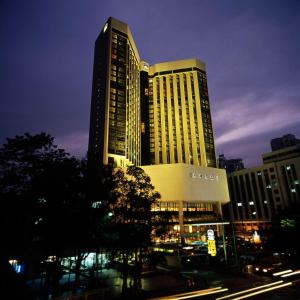 Shenzhen Best Western Felicity Hotel, Luohu Railway StationShenzhen
Shenzhen Best Western Felicity Hotel, Luohu Railway StationShenzhen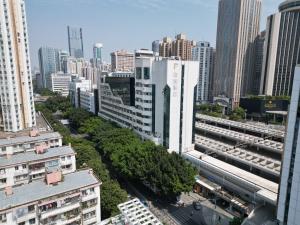 Paco Hotel Shenzhen Luohu PortShenzhen
Paco Hotel Shenzhen Luohu PortShenzhen Shenzhen Lido HotelShenzhen
Shenzhen Lido HotelShenzhen Shangri-La Shenzhen - Nearby Luohu Border, Outdoor Swimming PoolShenzhen
Shangri-La Shenzhen - Nearby Luohu Border, Outdoor Swimming PoolShenzhen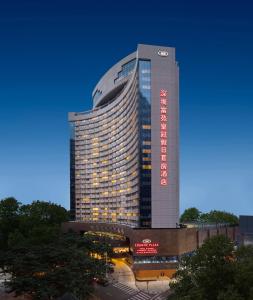 Crowne Plaza Hotel & Suites Landmark Shenzhen, an IHG Hotel - Nearby Luohu Border, Indoor heated swimming pool, Receive RMB100 SPA coupon upon check-inShenzhen
Crowne Plaza Hotel & Suites Landmark Shenzhen, an IHG Hotel - Nearby Luohu Border, Indoor heated swimming pool, Receive RMB100 SPA coupon upon check-inShenzhen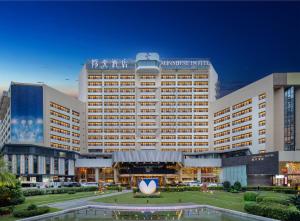 Shenzhen Sunshine Hotel, LuohuShenzhen
Shenzhen Sunshine Hotel, LuohuShenzhen Renaissance Shenzhen Luohu HotelShenzhen
Renaissance Shenzhen Luohu HotelShenzhen LanOu Hotel Shenzhen Luohu Ruipeng BuildingShenzhen
LanOu Hotel Shenzhen Luohu Ruipeng BuildingShenzhen















